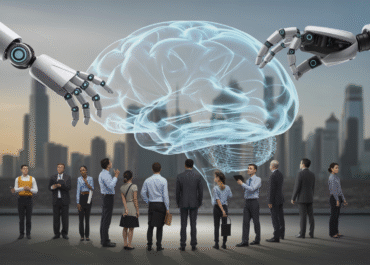AI Applications in Environmental Protection
Artificial Intelligence (AI) is no longer confined to the realms of science fiction; it’s actively deployed across various sectors, and its potential in environmental protection is particularly transformative. As our planet faces unprecedented ecological challenges, AI offers a powerful suite of tools to monitor, analyze, predict, and mitigate environmental damage, paving the way for a more sustainable future.
Precision Agriculture for Sustainable Resource Management
One of AI’s most impactful applications is in precision agriculture. By leveraging machine learning algorithms with data from sensors, drones, and satellite imagery, farmers can optimize resource use like water and fertilizers. AI-driven systems can analyze soil health, predict crop yields, detect diseases, and even automate irrigation, leading to reduced waste, lower environmental impact, and increased food production efficiency. This move away from traditional, resource-intensive farming is crucial for ecological balance.
Enhancing Waste Management and Recycling
AI is significantly improving waste management processes. Robotics equipped with AI-powered vision systems can sort recyclable materials with remarkable speed and accuracy, far surpassing human capabilities. Beyond sorting, AI algorithms optimize collection routes for waste management vehicles, reducing fuel consumption and emissions. Furthermore, AI can help identify patterns in waste generation, promoting more effective recycling programs and contributing to a circular economy model.
Monitoring for Biodiversity Conservation
Protecting endangered species and their habitats is a critical environmental challenge. AI is proving invaluable in biodiversity monitoring. Machine learning models can analyze vast amounts of data from camera traps, acoustic sensors, and satellite images to track animal populations, identify poaching activities, monitor deforestation, and understand ecosystem changes. This provides conservationists with real-time insights, enabling quicker responses and more targeted conservation efforts to safeguard our planet’s diverse life forms.
Predicting and Combating Wildfires
Wildfires pose a devastating threat to ecosystems, human lives, and property. AI offers sophisticated tools for wildfire prevention and mitigation. By analyzing weather patterns, vegetation density, historical fire data, and topographic information, AI models can predict areas at high risk of ignition. Once a fire starts, AI-powered drones and satellite imagery can provide early detection and real-time mapping of fire progression, allowing firefighters to deploy resources more effectively and contain blazes before they escalate.
Reducing Water and Air Pollution in Smart Cities
In increasingly urbanized environments, AI plays a crucial role in mitigating pollution. In smart cities, AI-driven sensor networks monitor air and water quality in real time, identifying pollution hotspots and sources. AI can optimize urban traffic flow to reduce vehicular emissions, manage smart grids to promote renewable energy integration, and even detect leaks in water supply systems, preventing water waste and contamination. These applications contribute to healthier urban environments and a lighter ecological footprint.
The integration of AI into environmental protection efforts represents a significant leap forward in our quest for sustainability. While AI is not a standalone solution, its analytical power, predictive capabilities, and automation potential make it an indispensable ally in addressing the complex environmental challenges we face today. As technology evolves, AI’s role in safeguarding our planet is only set to grow, offering hope for a healthier, more resilient Earth.


